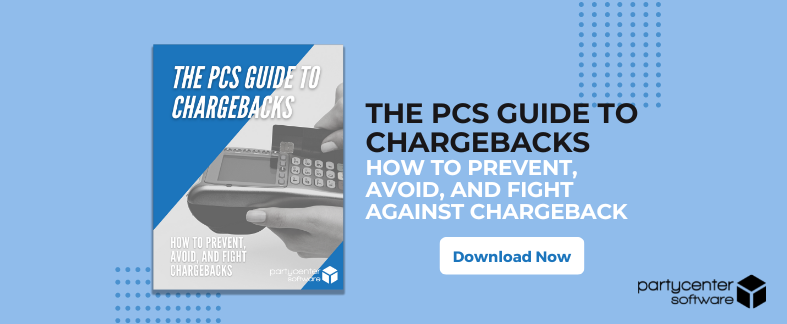If you read our blog from last week on How to Prevent Chargebacks at Your Facility, then you're probably already familiar with what a chargeback is and some of the reasons why they’re initiated.
In this post, we'll explore how the chargeback process works and how you can fight a chargeback if one is initiated by a customer.
How does the chargeback process work?
Let's go over the chargeback process step by step.

Step 1: A transaction occurs.
First, your customer would have completed a transaction. This might’ve taken place online or in person at your facility. A customer has up to 120 days from the date of the transaction to file a chargeback.
Step 2: Customer initiates a chargeback.
The money is moved from the merchant’s account and credited back to the customer.
After seeing a fraudulent transaction (or other chargeback reason type), the customer initiates a dispute with the issuing bank of their credit card. Once this chargeback is initiated, the funds are removed from the merchant’s bank account and are given back to the customer the day they file the dispute. This fund reversal can be temporary or permanent, depending on the results of the dispute.
Step 3: The customer’s bank (the cardholder’s issuing bank) reaches out to the merchant’s bank (PC Pay) requesting information or evidence about the transaction.
The issuing bank will now seek further information from the merchant. They will provide the reason for the dispute and will request evidence to clear the case. They will also provide a date by which all information must be submitted.
Please keep in mind that the person reviewing your case knows nothing about your facility or your policies. So, it is important that you present your case in a clear, organized manner, highlighting the important points that address the chargeback reason.
Since all evidence must be submitted together, at one time, we recommend creating a multi-page PDF file with your documentation. Additional evidence cannot be submitted later, so all information must be collected at once.
Step 4: The information is submitted and the cardholder’s issuing bank reviews the information.
It is important to understand that the issuing bank is the decision-maker in this process and that in certain cases, such as fraud, evidence from the merchant may not help and the issuing bank may rule in favor of the cardholder.
Step 5: A decision is made and all parties are informed.
If a merchant wins the case, they will receive a credit back. If the merchant loses the case, the transaction will not be refunded.
Step 6: (Optional) The case escalates to arbitration.
In some cases, a merchant will be allowed to take the case a step further to arbitration.
It is important to note that not all cases will have this option. In cases that do, the merchant must weigh the pros and cons of arbitration as there is the potential for additional costs and legal fees if the case results are not in the merchant’s favor. Again, the final decision is made by the cardholder’s issuing bank.
What Can I Do to Fight a Chargeback?
The most important thing you can do to help fight a chargeback is to first decide to dispute it.
Before you get to work collecting evidence, pick up the phone and call your customer to see if you can resolve the issue. In some situations, a simple mistake was made and the customer may drop the dispute.
Do not provide a refund to the customer during this time. Chargeback disputes must be settled appropriately to avoid any potential additional fees or confusion.
If the issue cannot be resolved on the phone with the customer and they do not agree to drop the dispute, get to work as quickly as you can and collect the requested evidence for the specific case at hand. You will be notified of the date by which the evidence must be submitted. Adhere to this! Gather the evidence quickly and create one PDF file that includes all the details of your argument.
On page one, explain (in words) the situation from your perspective. Keep it factual and avoid story-telling. Simple facts such as:
“Customer booked party online on 5/2/21 and paid a deposit in the amount of $50 on card ending in 1234. On the day of the party, the customer paid the remaining balance of $525 using the same card ending in 1234 in the EMV-chip reader.”
Then include all pieces of evidence: the customer’s deposit receipt, the transaction log with the customer, the day-of receipt, a copy of ID, etc. Consider using the highlighter tool to highlight critical details.
Remember, you only have one opportunity to fight a typical chargeback, so make sure your evidence is compelling and that nothing is left out.
We'd Love to Hear Your Thoughts! Comment Below.
Were the tips in this article helpful? Let us know in the comments below!
Check out our resource on Chargebacks
Click the image below to download our new resource on chargebacks!
